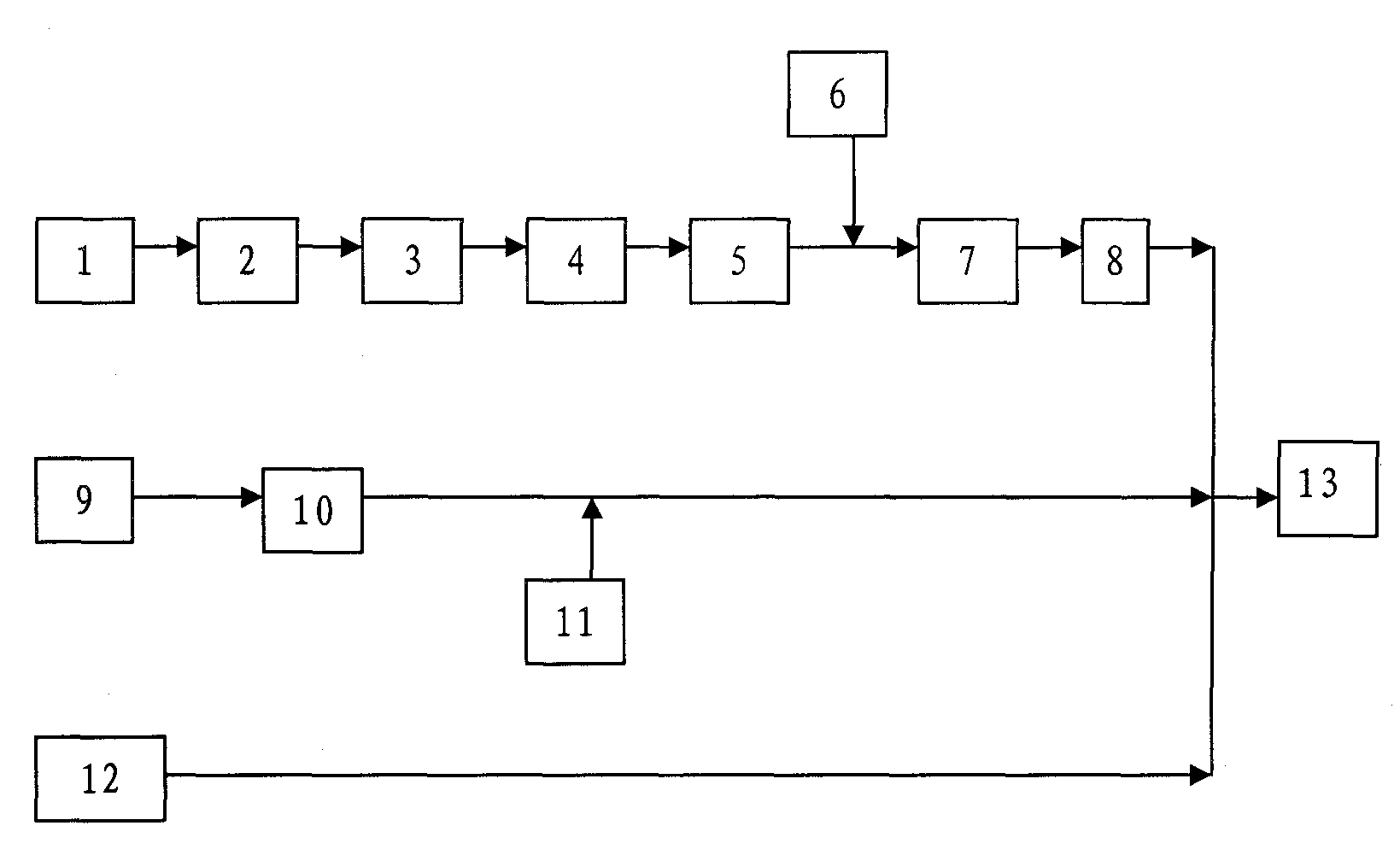Artificial optimized culture method for sea squirt, microalgae and stichopus japonicus
A breeding method and sea squirt technology, which is applied in the field of sea squirt-microalgae-stichopus artificially optimized cultivation, can solve the problems of lack of technical methods and other problems
- Summary
- Abstract
- Description
- Claims
- Application Information
AI Technical Summary
Problems solved by technology
Method used
Image
Examples
Embodiment 1
[0019] Common ginseng pond culture in sea area
[0020] 1) Collect sea squirts (1) in the Chlamys farreri breeding area. When collecting, pay attention to remove them together with the attachment base to avoid damage to the sea squirts. Temporary cultivation in the sea squirt holding pond (2), the water temperature is 15-18°C, and the breeding density is 200 fish / m 3 , feed microalgae bait twice a day, and keep continuous light. During breeding, the water body needs to be filled with air. Mature ascidian fertilized eggs (3) are collected and hatched into ascidian tadpole larvae (5) in a sea squirt hatching tank (4) at a hatching temperature of 20°C. A nylon rope (6) is hung in the hatching tank, and the larvae are attached to the nylon rope within 24-48 hours after hatching. When the sea squirt larva grows to about 1cm, move the nylon rope (7) attached to the sea squirt into the water body with a volume of 2.5m 3 in a 1.5m×1.5m×1.5m aquarium (8), with a breeding density of...
Embodiment 2
[0029] Mesh enclosure culture in sea area
[0030] 1) Collect sea squirts (1) in the Chlamys farreri breeding area. When collecting, pay attention to remove them together with the attachment base to avoid damage to the sea squirts. Temporary cultivation in the sea squirt holding pond (2), the water temperature is 15-18°C, and the breeding density is 200 fish / m 3 , feed microalgae bait twice a day, and keep continuous light. During breeding, the water body needs to be filled with air. Mature ascidian fertilized eggs (3) are collected and hatched into ascidian tadpole larvae (5) in a sea squirt hatching tank (4) at a hatching temperature of 20°C. A nylon rope (6) is hung in the hatching tank, and the larvae are attached to the nylon rope within 24-48 hours after hatching. When the sea squirt larva grows to about 1cm, move the nylon rope (7) attached to the sea squirt into the water body with a volume of 2.5m 3 in a 1.5m×1.5m×1.5m aquarium (8), with a breeding density of 300 ...
PUM
 Login to View More
Login to View More Abstract
Description
Claims
Application Information
 Login to View More
Login to View More - R&D
- Intellectual Property
- Life Sciences
- Materials
- Tech Scout
- Unparalleled Data Quality
- Higher Quality Content
- 60% Fewer Hallucinations
Browse by: Latest US Patents, China's latest patents, Technical Efficacy Thesaurus, Application Domain, Technology Topic, Popular Technical Reports.
© 2025 PatSnap. All rights reserved.Legal|Privacy policy|Modern Slavery Act Transparency Statement|Sitemap|About US| Contact US: help@patsnap.com

